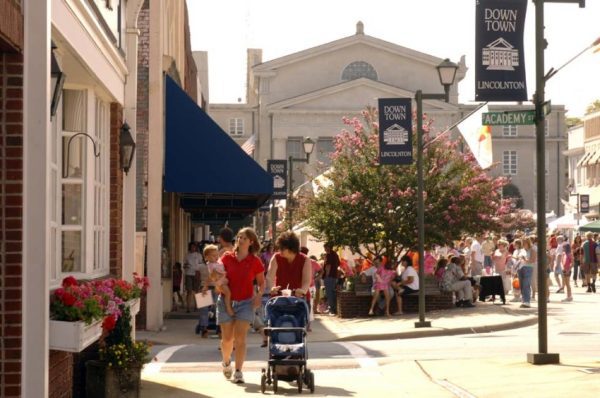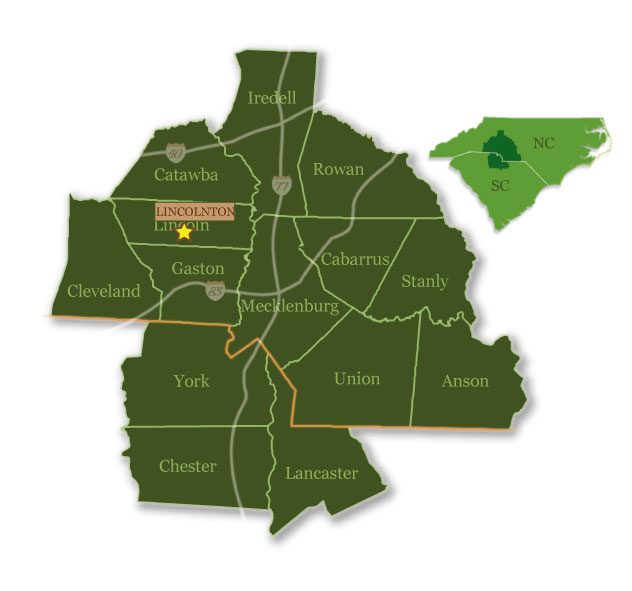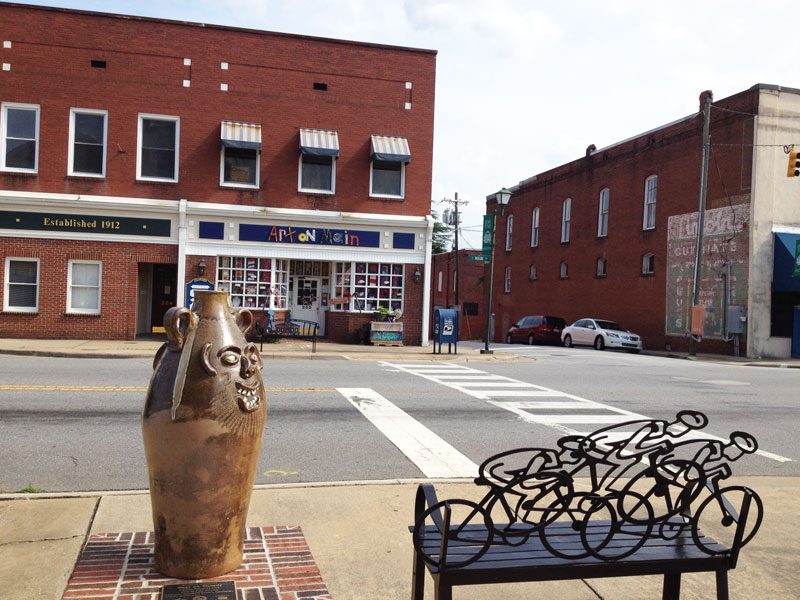Lincolnton: Moving beyond a textile town past

Talk of the Towns is a PlanCharlotte series visiting planners from the 14-county Charlotte region. This installment takes us to Lincolnton. 
Lincolnton is a city of 10,486, a former textile town and the county seat of Lincoln County. Laura Simmons has been the city’s planning director since 2010. She talked about intersection improvements, downtown development and air quality.
What are the most recent development trends in Lincolnton?
Simmons: We’re seeing a bit of small-scale commercial and retail development, but not so much on the residential side. We’re definitely seeing some growth, as the economy has recovered, and we are doing everything we can to attract growth.
What are some of the ways you’re trying to attract growth?
One thing we did was streamline the permitting process for manufacturing uses. We were a textile town, and so we have manufacturing properties that are underused or not in use. Anything we can do that helps to grow jobs is a big issue for us. Also, any manufacturer is also going to be a major water user. And that’s a big issue for us, too. We’ve got way more water-generating capacity than there are users.
So we tried to take an unknown out of the process. As long as a manufacturer submits a plan that aligns with the code in black and white, they know sitting down, day one, that they can get that permit. Before, it was a more discretionary process though conditional use permitting.
More Talk of the Towns interviews |
How has the recession affected Lincolnton?
It just really brought residential development to a standstill. We’re not really seeing large-scale subdivisions, just a few single-family permits here and there. A 56-unit apartment complex next to the new Walmart got its permits recently, but otherwise the residential has been very slow to recover.
How important is traditional downtown development to Lincolnton?
A lot of people here are focused on preserving downtown and attracting businesses to downtown. The city’s Business and Community Development Department also staffs the Downtown Development Association. The DDA has lots of committees that work to make sure downtown is lively. Lots of hours and resources go into that. The Business and Community Development Department, with two staff members, also works with an organization called Lincoln Economic Development Association (LEDA), which focuses on economic development, particularly industrial recruitment. We recently announced a fabric coating operation going into the old Carolina Mill. So there’s a lot of effort involved, not only in downtown but the city as a whole.
Have you made any other changes to the city’s planning ordinance lately?
We tend to just tweak as we go along, rather than doing a wholesale rewrite. We have also worked on broadening the sidewalk requirements in the city. That requirement wasn’t being triggered in as many situations as it should have been.
Speaking of sidewalks, is “complete streets” on your radar?
Part of that sidewalk code change was looking at the fact that we cannot have all trips being made by auto. We have a confined  geography in Lincolnton, and we don’t have a lot of excess right-of-way for additional lanes to widen.
geography in Lincolnton, and we don’t have a lot of excess right-of-way for additional lanes to widen.
We recently coordinated with the state on a road-diet street conversion [where the number of lanes on a street shrinks] on South Laurel Street and made some bike lanes on what was a travel lane. We’re also looking at some ways to further expand our Rail-Trail system here (a 1.7-mile path from City Park to Betty Ross Park). But we want to do it cheaper than in the past. So we’ll need to find alternatives to building a more formal asphalt path.
What are some environmental concerns for the Lincolnton? Any environmental success stories?
I think completing the most recent expansion of the rail-trail has been an environmental success. You hear lots of positive comments from people about getting out and walking, and walking to downtown and potentially doing some shopping on foot. We’re in that zone where we’ve got bad air quality, and that is linked to asthma and lung cancer. The good news is we’re eligible for some federal grant funding through the CMAQ improvement (Congestion Mitigation and Air Quality) program. We were able to get about $580,000 through that program for some intersection improvement at East Main Street and Generals Boulevard. We plan to add painted crosswalks, improve the sidewalk network and add pedestrian countdown signals.
Our next effort with the trail system will be to link it to Boger City and the new hospital. When that happens, you could potentially walk from those parts of town all the way to downtown. It could capture some home-to-work trips.
Are you expecting suburban growth from Charlotte?
It might be a few years before the gap between Denver and Lincolnton fills in so that it spills over this way. We’re definitely seeing growth triggered by something. I don’t know if it’s proximity to Charlotte or that we’re a straight shot on U.S. 321 to Hickory. So we’re ideally situated to pick up some growth. I think Denver is becoming more of a bedroom community to Charlotte, but we haven’t seen that yet.
What’s your biggest planning success story?
One thing I’m most proud of is working with a citizen-based group to improve the trail system. It’s called WALC (Wandering about Lincoln County) and it started in the Denver area. An offshoot began to focus on Lincolnton alone, and that’s this group of citizens and staff who brainstorm together. It’s amazing the energy of a group willing to come together and think of different ways to do things. That’s a good planning effort that will actually see some benefit in the short term and the long term.
The city’s effort on the intersection improvements has also been a success. We’ve had lots of support from the City Council and the city manager and from local NCDOT (N.C. Department of Transportation) staff. That’s been kind of a joint city/state/federal partnership.
What has been your biggest planning disappointment?
I wouldn’t say I have any disappointments, just opportunities. In a small town setting you’ve got to figure out how to do more with less. You have to figure out a way to do things, preferably with no cost or very low cost. That’s fun, to have to put a puzzle together.
With manufacturing, for example, there’s only so much Lincolnton can do with a traditional incentives package. Maybe you can offer property tax and utility tax breaks. So we had to ask ourselves, “What can we do to make Lincolnton easier and more friendly to work with?” We wound up streamlining the process rather than looking at a formal new incentive program like what a larger town could afford.
What’s the next big thing in Lincolnton?
For planning, the next big things will be the intersection improvements and making plans and figuring out ways to make the rail-trail and connections out to Boger City.
We’re going to grow the city in a smart way without necessarily having to spend millions of dollars on an infrastructure program.
